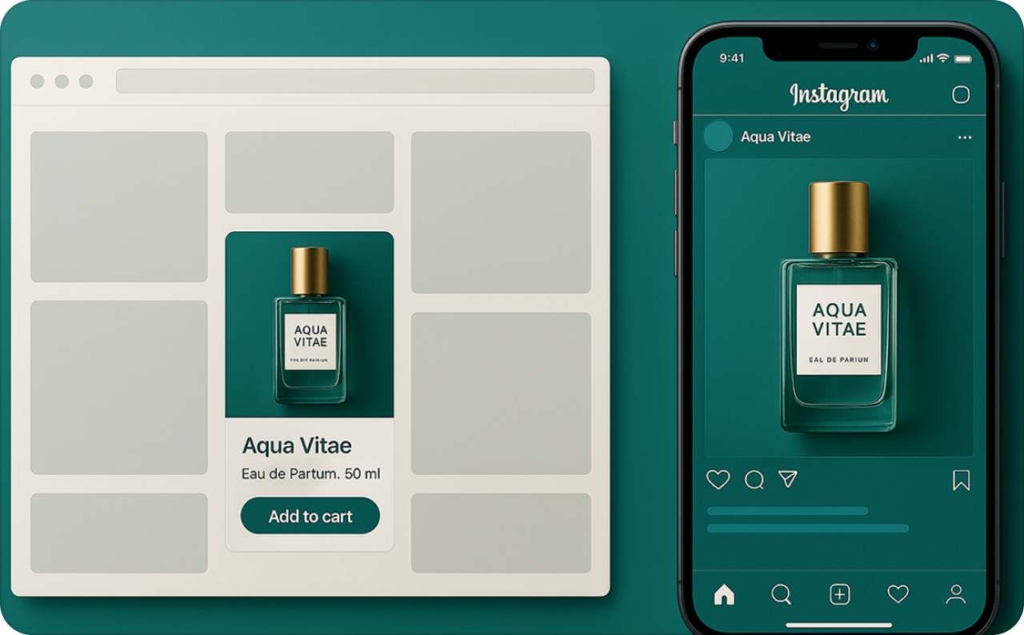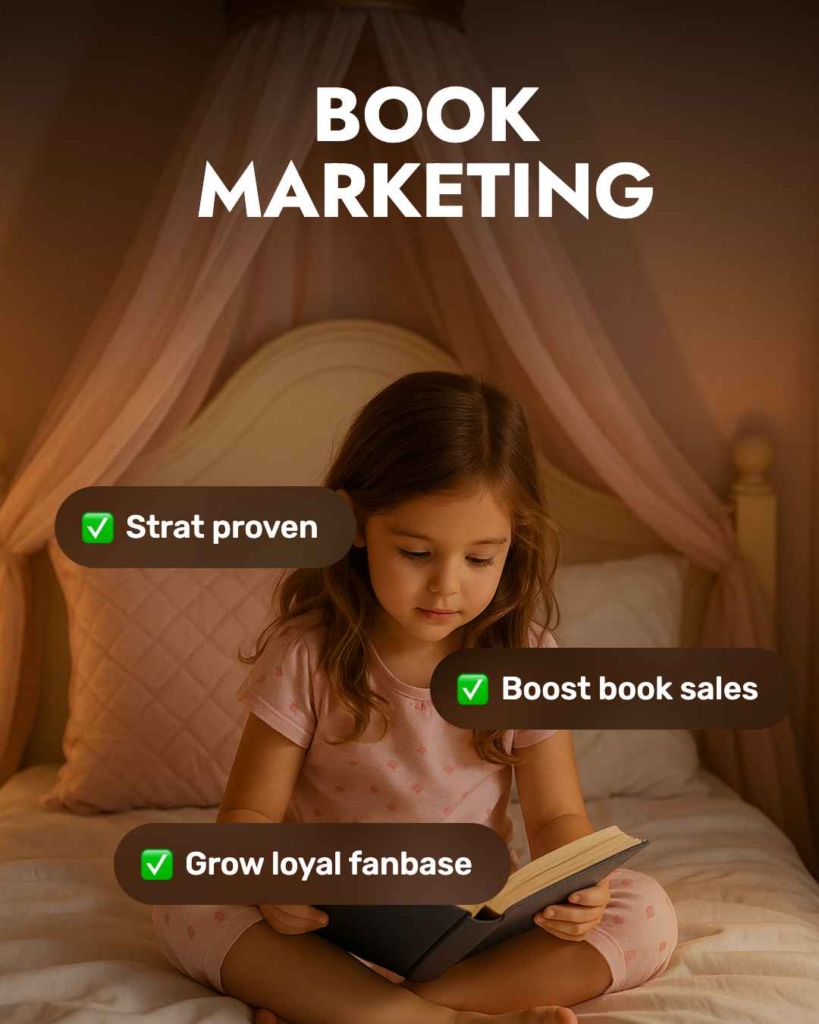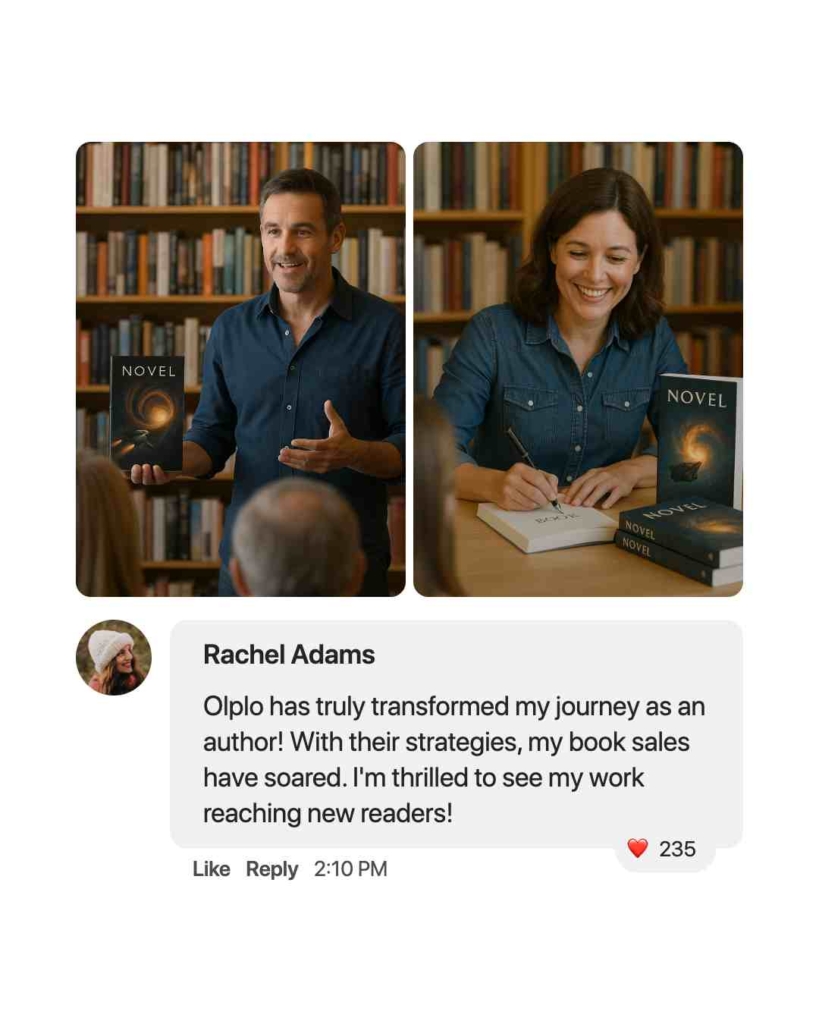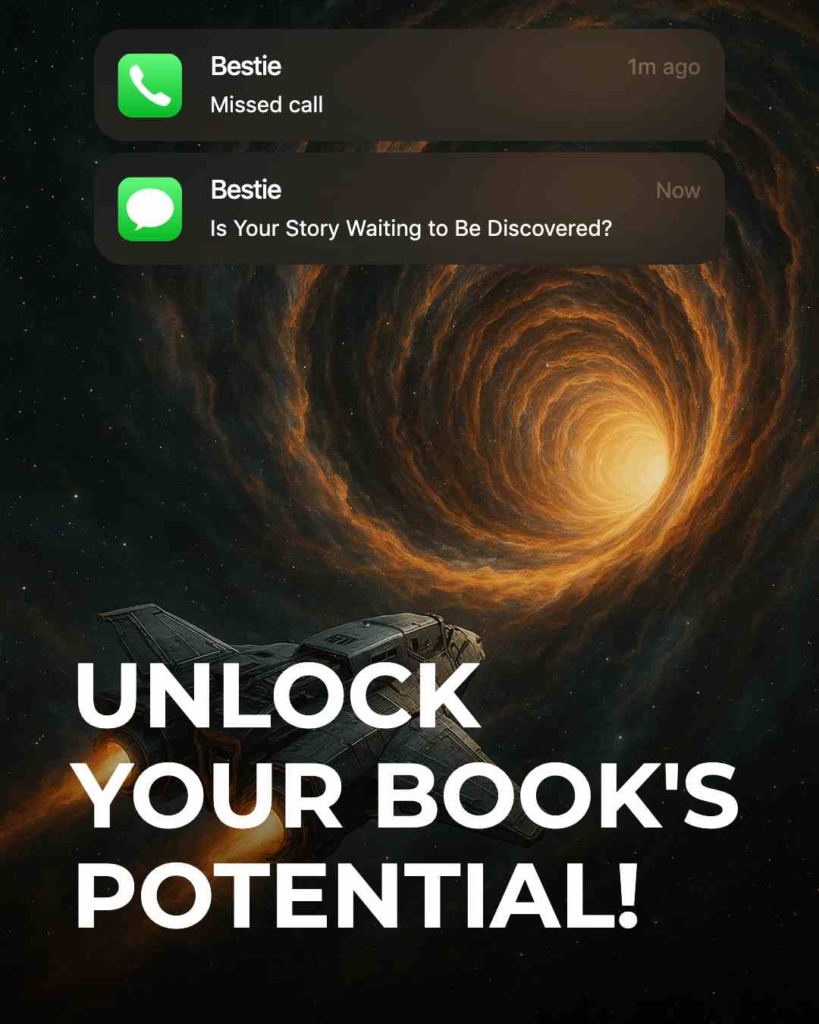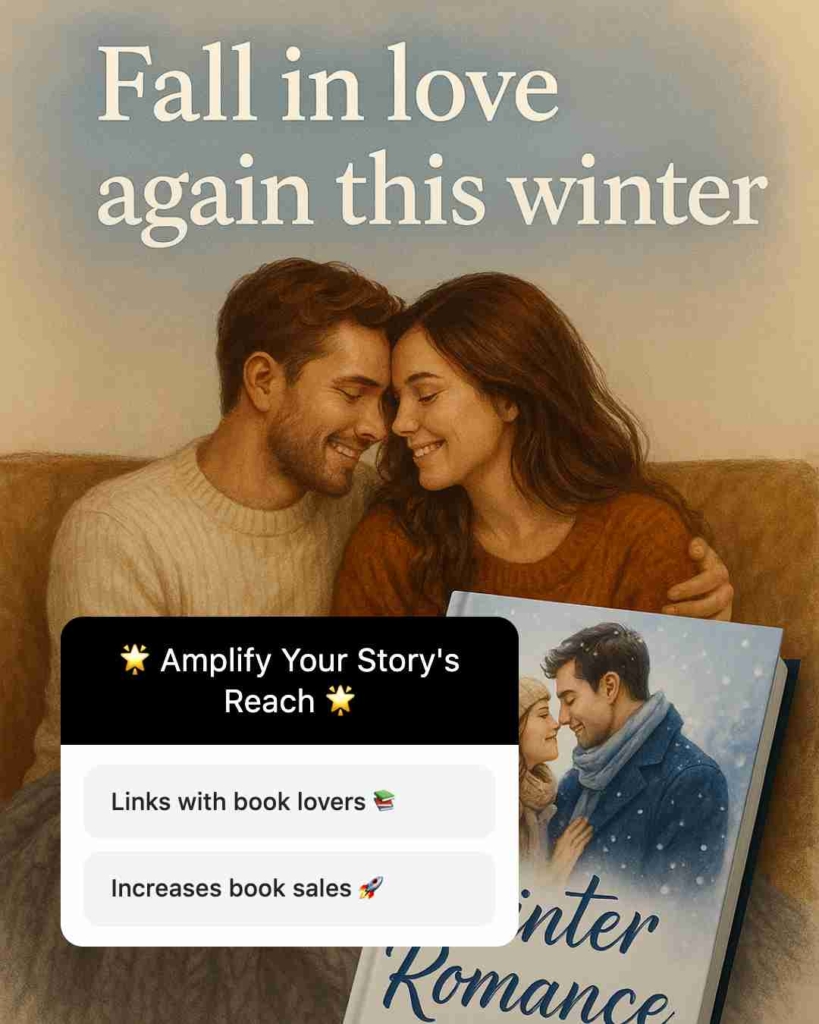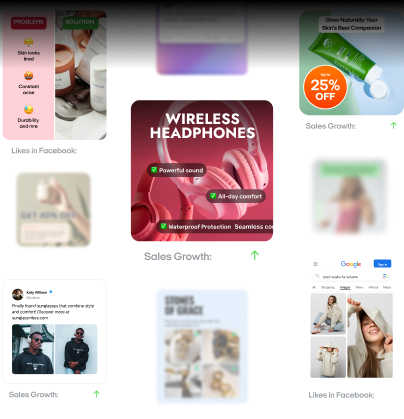Advertising for authors: Read 15 proven examples and use them in your ads
Struggling to market your book like a pro? Zeely AI reveals 15 ad examples that help authors sell more with proven strategies you can copy today.
Advertising for authors is how you turn a book into something discoverable. You run paid media campaigns on Amazon, Facebook, Instagram, BookBub, or through email promotions and track ACOS, ROAS, CTR, and CVR to see what’s really working.According to HubSpot, in 2025, 86% of marketers say personalized experiences directly boost sales. That matters for authors too. Every book ad, every targeted campaign, every reader funnel should feel built for one specific reader. When you treat metrics as clues, not just numbers, your author advertising strategy turns into a system that quietly sells more books.
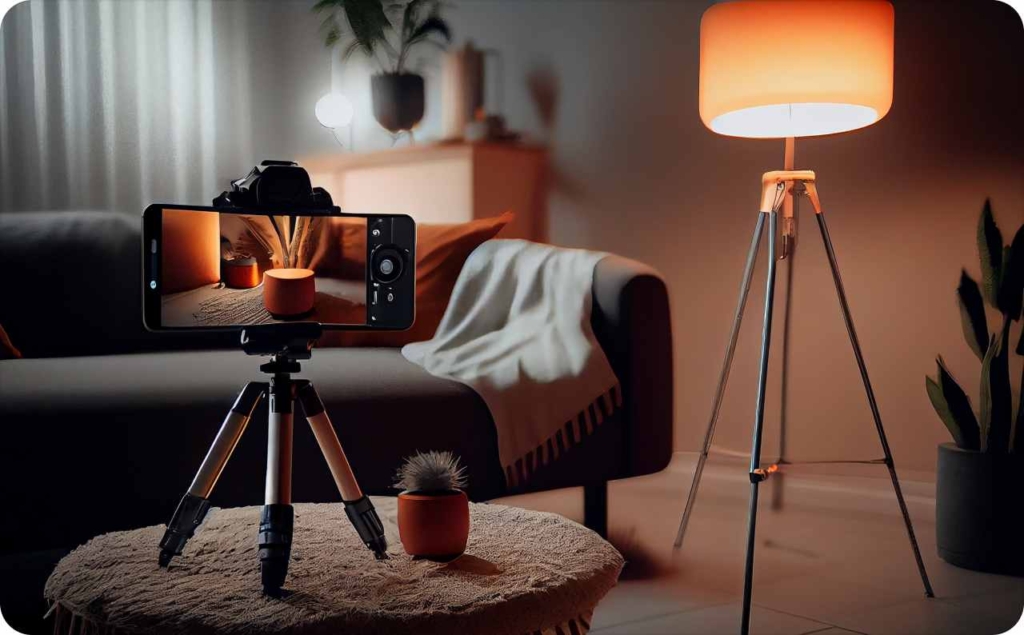
What is advertising for authors?
Advertising for authors means running paid media that helps readers actually find your books. It’s a measured system that connects your stories to the people looking for their next read.
That system usually starts with Amazon Sponsored Products or Sponsored Brands to reach readers already browsing similar titles. Then comes Meta Sales or Traffic campaigns on Facebook and Instagram for early discovery, BookBub Ads to catch genre fans mid-scroll, and promo emails to spark KU/KENP reads or backlist interest.
You track results through simple, honest numbers — ACOS, ROAS, CTR, CPC, CVR, and the read-through value of your series. Those metrics don’t just prove performance; they show whether readers are exploring or truly buying, your balance of discovery intent vs. retail intent.
And remember: the way readers discover stories is shifting. Pew Research Center notes, 1 in 5 Americans now regularly gets news on TikTok, up from just 3%. That shift matters, because attention is mobile, visual, and fast.
For most authors, this approach works best during launches, discounts, backlist revivals, or KU pushes — moments where a small burst of visibility compounds into steady rank velocity.
How it works
Author ads work like small, data-driven engines that learn as they run. Every impression, click, and sale feeds back into how your next reader finds you. The mechanics are simple: once you know what to watch.
1. Targeting and reach
Your reach begins with how precisely you aim. On Amazon, use exact and broad-match keywords or ASIN product targeting to appear beside similar books. On Meta, build broad and lookalike audiences to find readers who behave like your best buyers. Layer remarketing stacks to follow up with those who clicked but didn’t convert. Each layer moves someone closer to purchase — from curiosity to commitment.
2. Creative system
Your ads win or lose in a split second. Use 1:1 or 4:5 images with clear covers, trope overlays, and social proof badges that signal credibility fast. Pair that with short-form video or Reels for platforms where motion grabs attention. Highlight what matters most — a KU promo, a limited-time price, or a tagline that anchors the book’s promise.
3. Budgeting and pacing
Start small, around $5–$20 per day, and let the data breathe. Most platforms need a 3–7 day learning window before results stabilize. When CTR and CVR pass healthy thresholds, scale gently: increase daily budgets by +20–30%, not all at once.
4. Optimization rules
Follow patience and precision. Wait for roughly 10 clicks per keyword or 10,000 impressions before touching bids. Apply a stop-loss rule: if you hit 20+ clicks with no sale, pause and review. Once CTR ≥0.4% and CVR ≥7%, test a Top-of-Search bid adjustment to capture high-intent visibility.
For perspective: the average click-through rate across Google Ads in 2025 is 6.66%, according to WordStream. Use that as a loose benchmark, platform averages vary, but it helps frame realistic early expectations.
5. Tooling and tracking
Use the ACOS calculator to track ad profitability, Meta Advantage placements and Conversion API for cleaner data, and Amazon bid adjustments or BookBub CPC/CPM tests for control. Together, these tools turn instinct into insight, helping you refine reach, creative, and spend until your ads quietly start selling for you.
Facebook ads for authors
Facebook ads for authors, and their visual twin, Instagram ads for authors, are often where discovery begins. These platforms turn casual scrollers into curious readers, using data-rich targeting and creative storytelling to guide the click.
You manage everything through Meta Ads Manager, setting a clear Sales objective so the algorithm finds buyers, not just eyeballs. Most authors begin with broad targeting or 1% lookalike audiences, then optimize the ones that stick. Using Advantage placements lets Meta test across feeds, Stories, and Reels, while Conversion API improves data accuracy in a privacy-first world.
Your message carries weight: clean trope hooks, KU messaging, and social proof build trust fast. Track link CTR and landing-page CVR, they tell you whether your ad is motivating curiosity or actually converting interest. Watch for creative fatigue once reach hits 20–30%, changing visuals before that keeps the momentum alive.
Here’s a relevant stat to keep in mind: after trying Trial Reels, 40% of creators started posting Reels more often, and 80% of those saw reach grow among non-followers. That kind of lift matters — more visibility means more readers seeing your ad, more often.
Every campaign should link to a clear goal, like sales, KU read-through, or audience growth, and anchor your creative and targeting choices. For detailed strategy and templates, see our full guide on Facebook ads for authors.
Amazon ads for authors
Amazon ads for authors, also known as KDP advertising, are the most direct way to reach readers ready to buy. Unlike social platforms built for discovery, Amazon campaigns catch readers already searching for their next book.
Most authors start with Sponsored Products and Sponsored Brands. These are the two formats that drive nearly all retail visibility. Use a mix of exact, broad, and product targeting to cover intent layers: from specific search phrases to competing titles. Keep your ASIN list tight and add negative keywords to block irrelevant clicks.
Placement matters. Once your CTR ≥ 0.4% and CVR ≥ 7%, test Top-of-Search bid adjustments, they often double visibility for high-performing keywords. Separate brand and non-brand campaigns to understand where readers first meet your work versus where they return.
Early data will look noisy, that’s normal. For launches, aim for a launch ACOS ≤ 70% as you gather signals; in steady state, most profitable campaigns settle around 30–50% ACOS, depending on genre and price point. Always balance short-term return with series read-through math — many authors earn more from later books than from the first click.
As a point of context: advertisers who added Sponsored Display video to their campaigns during Prime Day saw a 24% uplift in ad-attributed sales versus campaigns without video.
When tuned well, Amazon’s system becomes predictable: data in, clarity out. Your dashboard shows what readers type, what converts, and how every dollar performs. Learn how to structure campaigns and read those numbers in our full guide: Amazon ads for authors.
15 author ad examples that actually convert
You don’t need a massive ad budget to get real traction, just structure, intent, and a few proven plays that make every click count. These tested advertising blueprints for authors show how small, steady budgets can build lasting visibility.
Every book marketing path ties into email too. Campaign Monitor reports that a healthy click rate for email campaigns is 2%–3%, meaning only a small share of people who receive your email actually click through, but those clicks carry real value.
Below, each example breaks down a real, repeatable ad setup — what it does, why it works, and how to run it yourself. Whether you’re using Amazon Sponsored Products, Meta campaigns, or BookBub ads, these blueprints help you turn $5 or $10 a day into a system that keeps selling books long after the first click.
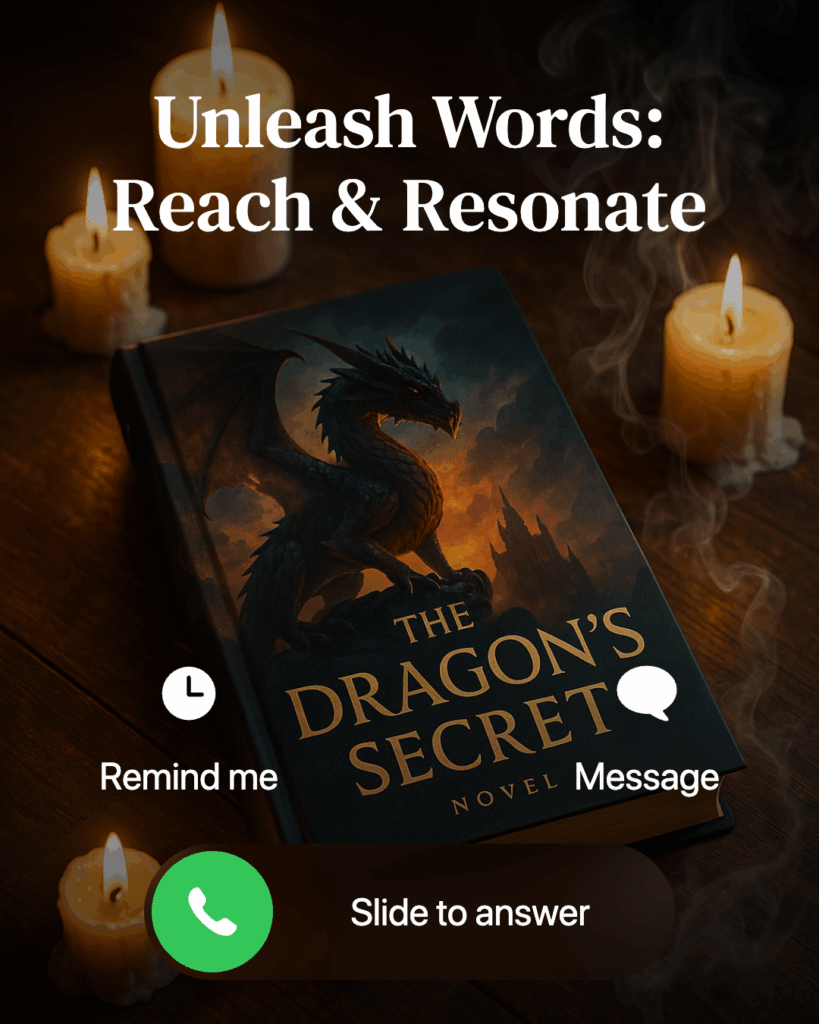
1. Amazon SP launch blueprint: Turn $10/Day into ranked visibility
Instead of guessing what to bid, structure your Sponsored Products launch so every dollar learns. Split campaigns into Exact, Broad, and Product targets to capture clear intent and build early rank velocity. This setup turns a small budget into predictable traction without panic edits.
Examples that work:
- Exact match ads that harvest high-intent searches
- Broad match ads that surface new adjacencies you wouldn’t think to target
- ASIN product targeting that intercepts shoppers on comparable titles or series
Why it works:
- Exact finds proven demand while Broad expands reach
- ASIN targeting captures readers already in buying mode
- Top-of-Search boosts compound CTR and accelerate retail rank
- Clear guardrails prevent wasted clicks and emotional bid changes
How to use it in your advertising:
Create three ad groups:
- 30–40 Exact keywords
- 40–80 Broad keywords
- 20–30 ASIN targets
Start bids at $0.30–$0.60, then add a Top-of-Search +20–40% adjustment once early clicks convert. Apply the stop-loss rule, pause any target with ≥20 clicks and no sale. For consistent performers, increase bids or budget by +20–30% every three days to scale visibility while maintaining control.
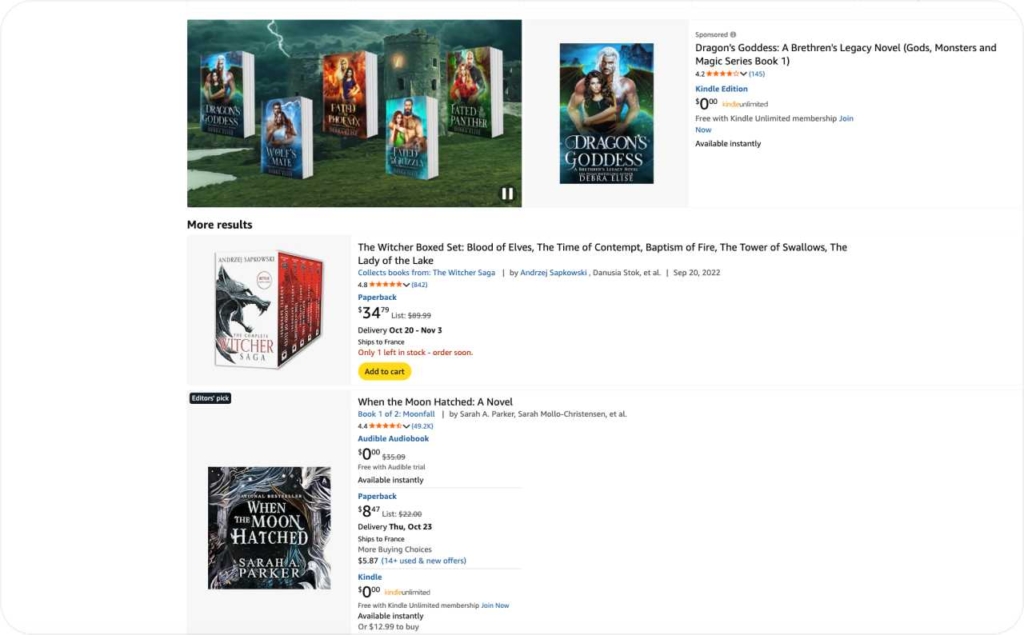
Photo source: Amazon
2. Facebook KU discovery push: Binge reads on autopilot
Run a KU-first Meta campaign that sells Book 1 while quietly building read-through for the entire series. Use broad reach and 1% lookalike audiences to find new readers, then let Meta’s learning system turn curiosity into page reads.
Examples that work:
- 4:5 visuals with bold trope hooks and a clean ‘Free in KU’ tag
- Swipeable carousels that show the first book’s hook and tease the series arc
- Reels where readers react to key plot moments or favorite characters
Why it works:
- Broad + lookalike targeting uncovers scalable, low-cost readers
- KU access removes price friction and fuels binge behavior
- 4:5 creatives fill more screen space, driving stronger CTR
- CAPI integration keeps learning stable and data consistent
How to use it in your advertising:
Choose the Sales objective with Advantage placements so Meta optimizes for purchases and reads. Launch 2–3 creatives per angle, each testing a different trope or tone. Watch performance: when Link CTR ≥ 1% and Landing Page CVR ≥ 6% hold steady for 72 hours, scale budgets by +20%. Refresh your visuals once you see 20–30% creative fatigue to keep discovery rolling and KU reads compounding.
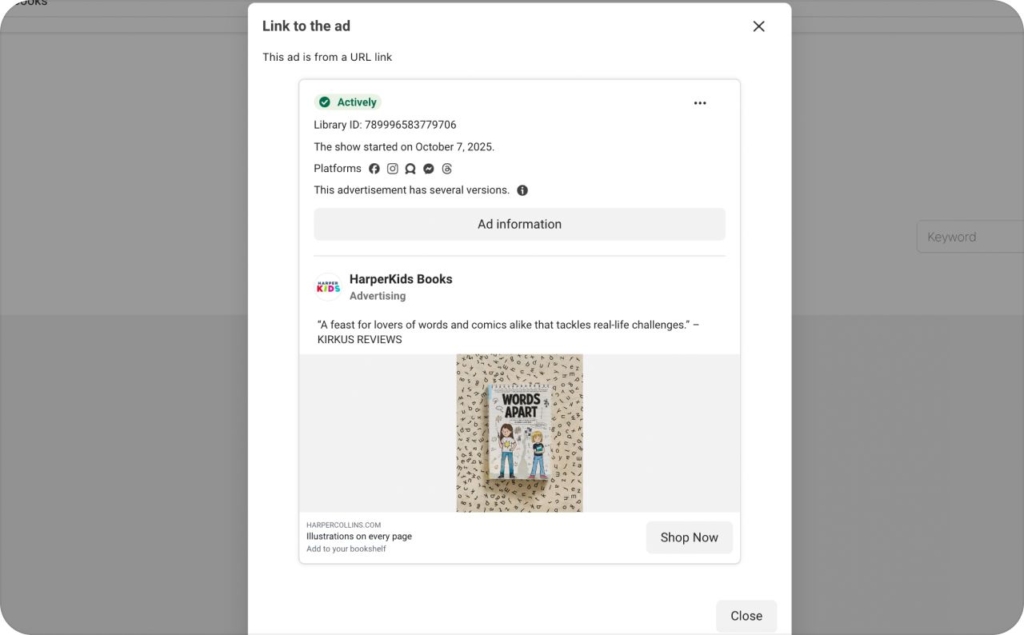
Photo source: HarperKids Books ad in Meta Library
3. BookBub CPC creative grid: Win clicks where readers shop
Use BookBub CPC ads to meet readers right where they’re already shopping. Rotate 10–20 ad creatives across comparable authors to test hooks, headlines, and visuals without overspending. Each variation highlights a familiar trope, a clear price cue, or KU access — details that matter when attention equals intent.
Examples that work:
- Side-by-side covers of your book and a popular comp author
- Simple static images with text overlays like “$19 today only”
- Ad copy that pairs a genre hook with a quick call to action
Why it works:
- The reader mindset on BookBub is already transactional, they’re primed to buy
- CPC bidding keeps tests budget-safe while you gather data
- Comp author targeting filters out mismatched traffic and finds proven buyers
- Fast iteration surfaces breakout angles you can reuse on Meta or Amazon
How to use it in your advertising:
Launch 5 images × 4 headlines, targeting 5–8 comp authors. Pause any creative with CTR < 0.7% after 1,000 impressions, and raise bids slightly on winners during promo weeks. Once you’ve found a click-efficient combo, retarget BookBub clickers on Meta to extend your reach and lower acquisition cost.
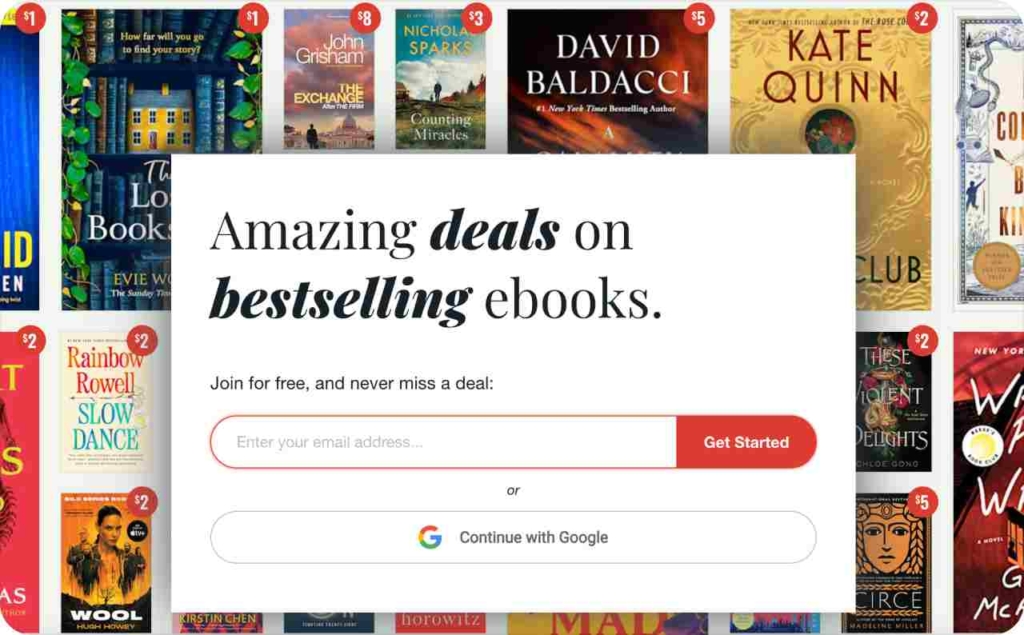
Photo source: BookBub
4. Price-promo velocity stack: Make discounts work harder
Run a 72-hour campaign stack that turns a simple price drop into real momentum. Pair your Kindle Countdown Deal or $0.99 promo with BookBub list buys, boosted Sponsored Products bids, and Meta remarketing to capture attention from every angle.
Examples that work:
- Countdown overlays on ad images with “Ends in 24 hours” or “$0.99 for a limited time”
- Coordinated SP campaigns that push Top-of-Search visibility during the promo window
- Meta retargeting that reminds past visitors what they almost bought.
Why it works:
- Synchronized pulses across platforms build rank velocity and compound visibility
- The discount lifts CVR and improves ad relevance scores, lowering costs mid-campaign
- Remarketing catches fence-sitters who saw the offer but didn’t click
- Time scarcity creates urgency without extra ad spend
How to use it in your advertising:
Increase SP bids by +20–40% for the promo window and add Top-of-Search placement once CTR improves. Run your BookBub list buys on Day 1 to drive the initial spike, then layer Meta remarketing to keep awareness high. Measure blended ROAS over 7 days, not just during the discount, to see the true afterglow of your promo stack.
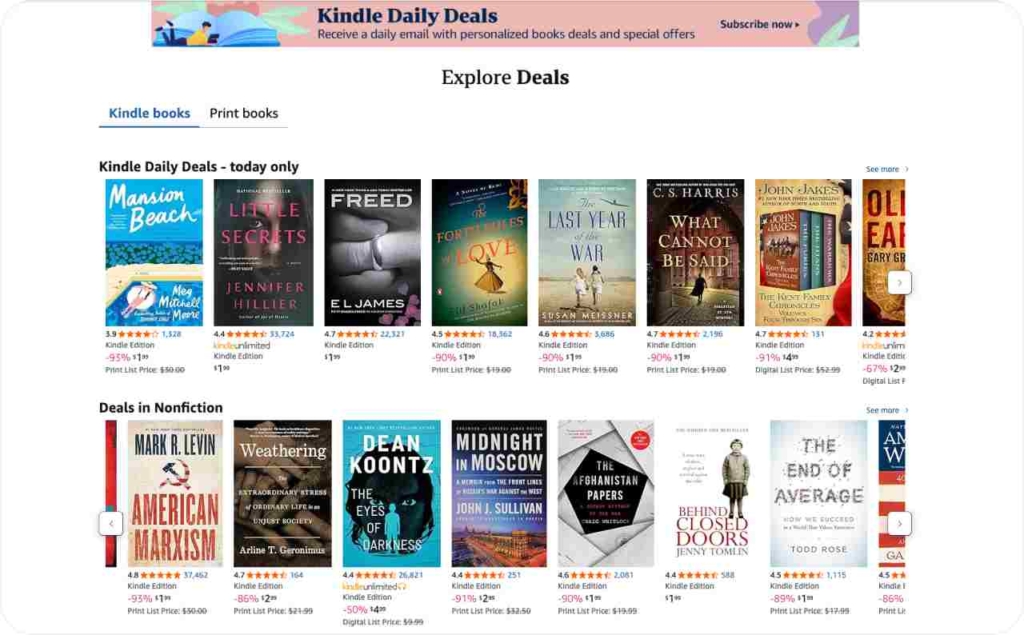
Photo source: Kindle Daily Deals on Amazon
5. ASIN conquesting: Steal shelf space from nearest neighbors
Use ASIN product targeting to place your ads directly on competing book pages and intercept readers already in buying mode. With the right genre-aligned covers and series branding, you turn nearby shelf space into steady discovery.
Examples that work:
- Sponsored Products featuring your cover beside a top-selling comp title
- Series banners that match tone and typography of category leaders
- Sponsored Brands linking to your full series page once Book 1 gains traction
Why it works:
- Targets proven buyer traffic instead of cold audiences
- Visual adjacency builds credibility instantly
- Usually cheaper CPCs than broad keyword campaigns
- Series cues encourage multi-book purchases and higher lifetime value
How to use it in your advertising:
Collect 20–50 ASINs from your “Also boughts” and top category performers. Set initial bids between $0.25–$0.55, raising bids on ASINs with CTR ≥ 0.5% or consistent conversions. Once your Sponsored Products stabilize, layer in Sponsored Brands to reinforce visibility and pull readers deeper into your catalog.
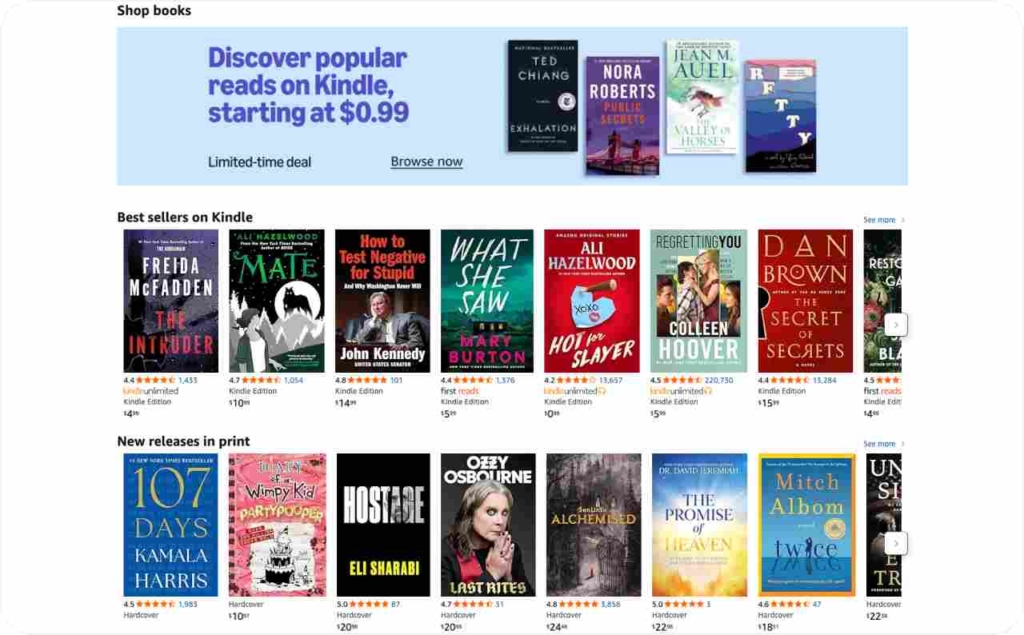
Photo source: Amazon
6. Top-of-Search surge: Rank where purchase starts
Once your campaigns show steady traction, use Top-of-Search placement multipliers to amplify only the ad groups that earn it. This small, selective adjustment captures high-intent clicks right where readers begin their buying journey.
Examples that work:
- Boosting ToS bids on your top five converting keywords
- Prioritizing series starters that already hold a strong CTR
- Using placement multipliers on price promos to compound early rank gains
Why it works:
- Top-of-Search traffic carries stronger purchase intent than mid-page impressions
- A higher CTR signals relevance, which often lowers CPC over time
- Sustained rank lift compounds organic visibility, turning paid clicks into free ones
- Clear gating rules prevent overspend and keep scaling data-driven
How to use it in your advertising:
Apply ToS multipliers of +10–50% only where CTR ≥ 0.4% and CVR ≥ 7%. If ACOS rises too sharply, reduce the multiplier instead of cutting base bids, it protects your hard-won data. Add branded keywords last, once non-brand performance stabilizes, so your strongest placements work where they matter most.
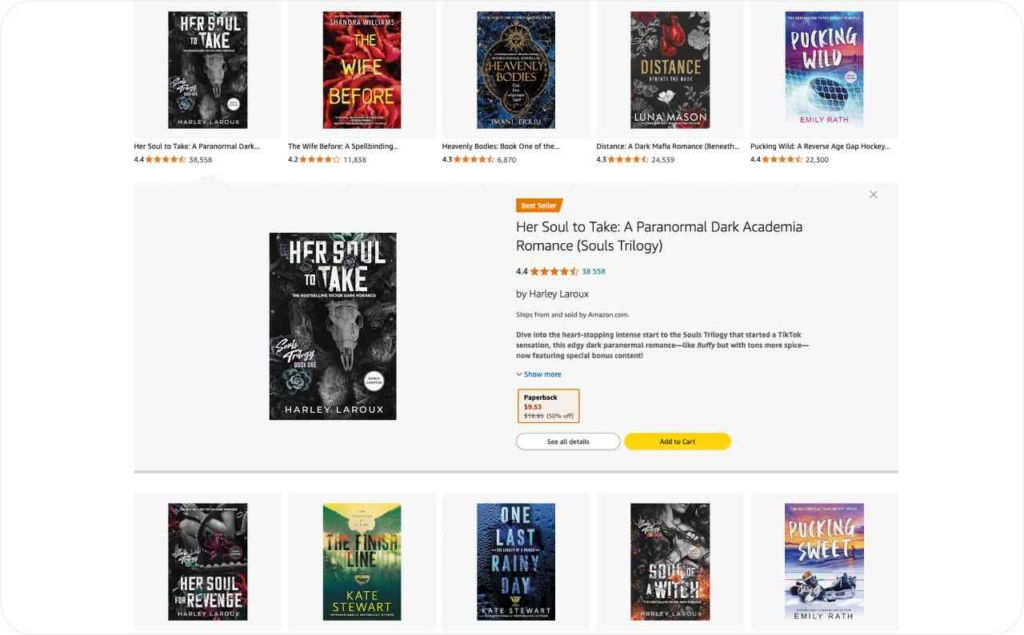
Photo source: Best Sellers Amazon
7. View-to-Amazon retargeting: Turn scrollers into buyers
Use a two-step Meta funnel to turn casual viewers into committed readers. Start with a short, scroll-stopping video that builds curiosity, then retarget those recent viewers with a clear offer that drives them straight to your Amazon page.
Examples that work:
- A 10–15 second Reel that opens with a strong trope hook — “one bed,” “found family,” “revenge romance”
- Reaction-style clips or teaser quotes that make readers pause mid-scroll
- Follow-up static ads featuring your book cover, tagline, and a clear offer like “Free in KU” or “$0.99 today only”
Why it works:
- Low-cost ThruPlays build a qualified warm audience fast
- Sequenced messaging increases CVR by guiding readers from interest to action
- A second-touch ad with reviews or social proof lowers hesitation
- It connects discovery directly with purchase, no wasted clicks
How to use it in your advertising:
Run a 10–15s trope-first video to seed engagement, then build 3–7 day viewer audiences inside Meta. Retarget them with static 4:5 ads featuring your core offer. Track assisted sales and KU reads over 7–14 days to see the true lift. When the sequence clicks, you’ll turn casual scrollers into loyal series readers.
8. Instagram Reels hook ladder: Stop the scroll in 3 seconds
Grab attention before the swipe with short, vertical videos built for how readers browse. The Instagram Reels hook ladder uses fast visuals and genre-coded cues, think bold trope text, zoomed-in covers, and quick flashes of reviews, to build reach that feeds your retargeting pool later.
Examples that work:
- A 3-second opener showing “enemies to lovers” or “grumpy/sunshine” in on-screen text
- Quick cover zooms with star ratings or reader reactions layered in
- Subtitled clips that tease a plot moment or character reveal
Why it works:
- Motion and text hooks lift thumb-stop rate, your ad earns its pause
- Native Reels format delivers cheaper impressions and wider organic reach
- Reels viewers often convert on the second touch, especially when retargeted with offers
- Strong genre coding pre-qualifies the right audience before they ever click
How to use it in your advertising:
Write and test three hook variations, always with captions on for silent viewing. Pin a clean thumbnail so the Reel fits naturally into your grid. Build 95%-view audiences, then remarket them with static KU or price-driven creatives that close the loop — discovery first, conversion second.
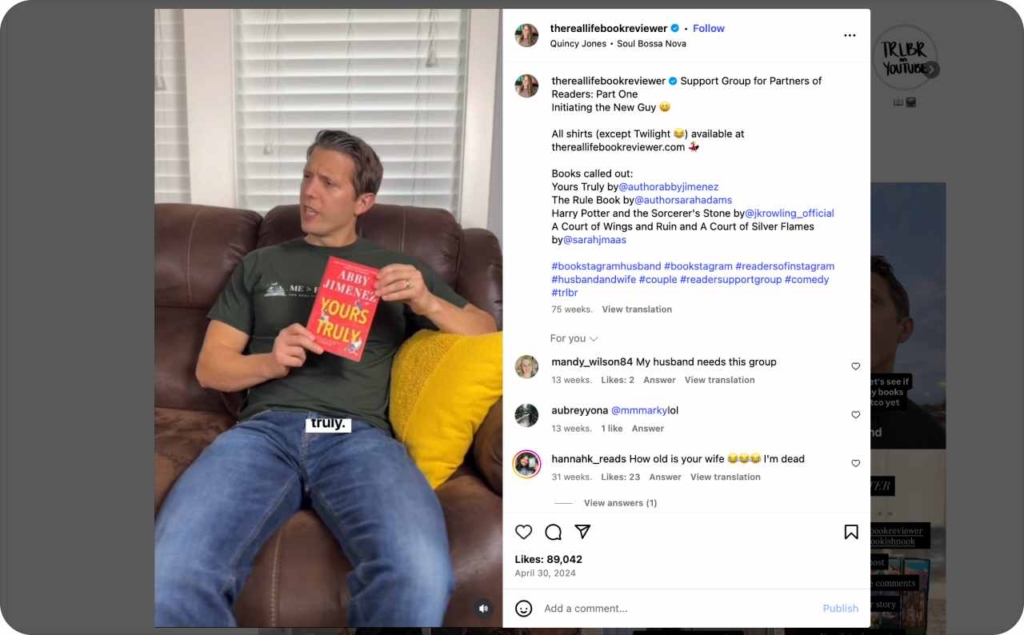
Photo source: @thereallifebookreviewer on Instagram
9. Google search “title + trope”: Capture ready-to-buy queries
Target high-intent Google searches that already sound like a shopper’s thought process — the mix of title, trope, and subgenre that says, “I’m looking for this kind of book right now.” By focusing on narrow, purchase-ready phrasing, your ad appears exactly when readers are most likely to click through and buy.
Examples that work:
- “Cozy mystery bookstore cat series”
- “Second-chance small-town romance kindle”
- “Space opera trilogy with found family”
Why it works:
- High intent cuts down wasted clicks and focuses on buyers, not browsers
- Exact phrasing improves Quality Score, which lowers your cost per click
- Strong ad strength signals relevance, earning cheaper, steadier delivery
- Mirroring trope and tone in your ad copy keeps the path from search to retail seamless
How to use it in your advertising:
Build a small Exact and Phrase match set around your book title, key tropes, and subgenre tags. Add sitelinks for “Series,” “Audiobook,” or “Read free in KU.” Bid to reach the first-page CPC, then monitor Quality Score and bounce rate — both reveal how aligned your ad feels to what readers actually searched for.
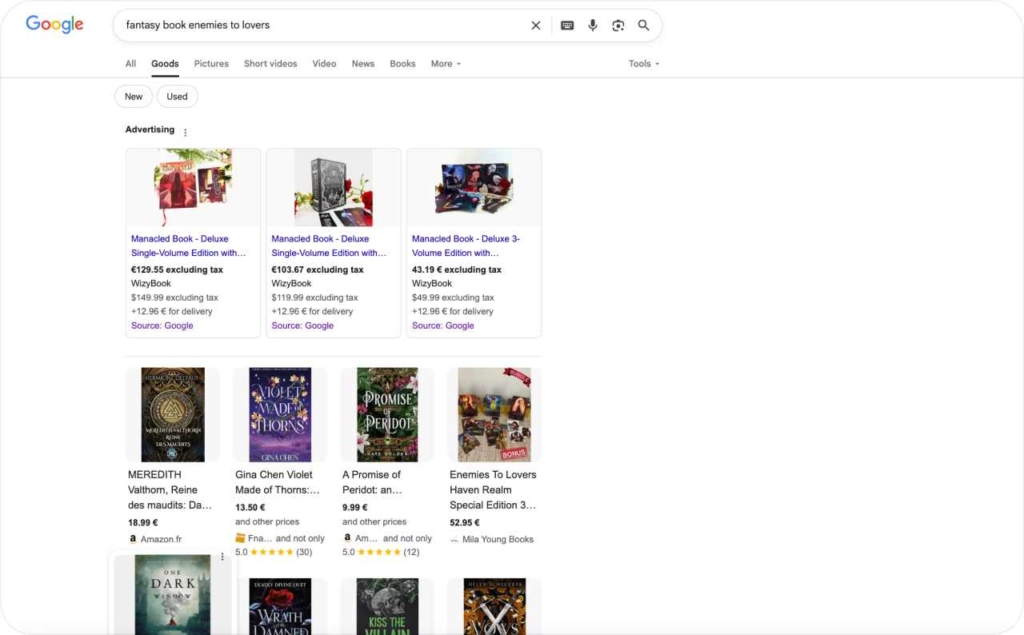
10. Google PMax series feed: Let assets find the buyer
Use Performance Max to turn your existing creative assets, like covers, blurbs, and prices, into a self-optimizing ad system that quietly finds new readers. Once it’s set up, Google distributes your ads across Search, YouTube, Discover, and Display, reaching buyers wherever they’re browsing.
Examples that work:
- A feed featuring high-res covers for each book in your series
- Short blurbs or taglines
- Price callouts
Why it works:
- Multi-surface reach spans Google’s full network — YouTube, Discover, and Search, maximizing discoverability
- Dynamic asset combinations test headlines, visuals, and CTAs automatically to uncover winning creative mixes
- Strong series pLTV compounds return — each new buyer can convert into multiple book sales
- After the first learning week, it’s low maintenance, requiring only light monitoring
How to use it in your advertising:
Upload your cover art, blurbs, and price points into a PMax campaign. Exclude any mismatched placements or irrelevant categories to keep targeting clean. Let it run for 10–14 days before making changes, then review blended ROAS and assisted sales to see how well the campaign feeds incremental readers into your ecosystem.
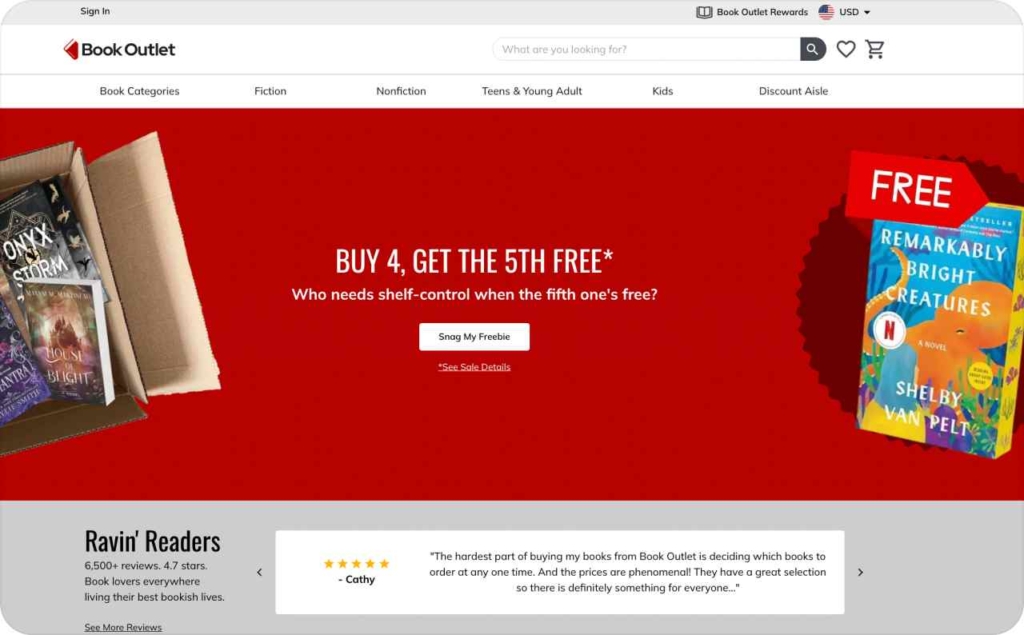
Photo source: Book Outlet
11. YouTube bumper + Amazon remarketing: Build trust fast
Pair six-second YouTube bumpers with Amazon retargeting to warm readers before they ever hit your product page. The quick video builds familiarity, then your Amazon ads close the loop with high-intent reminders that convert recognition into sales.
Examples that work:
- A fast cover reveal with a review quote or star rating overlay
- Short motion graphics of your tagline fading in over the book art
- End-frame callouts like “Available on Amazon” or “Free in KU”
Why it works:
- Micro-impressions build instant recognition that compounds on second touch
- Social proof boosts trust and future CTR
- Low-cost views grow large, retargetable audiences efficiently
- The video + retail loop tightens the buyer path from curiosity to checkout
How to use it in your advertising:
Create a 6-second bumper ad featuring your cover, rating, and tagline, then target relevant genre channels or reader interests on YouTube. Build a remarketing audience of those viewers and follow up with Amazon Sponsored Products using ASIN and exact-match keywords. The sequence builds trust fast — one quick glance, one familiar click, one new reader.
12. BookBub author-comp carousel: Borrow credibility
Use a swipeable BookBub carousel ad that visually echoes your top comp authors. By matching tone, typography, and cover cues, you frame your book as the natural “next pick” for readers who already trust those names.
Examples that work:
- A three-tile carousel: your cover beside two well-known comps
- A clean trope card, followed by a review pull or KU/price tile
- Subtle, genre-consistent color palettes that blend with existing BookBub feeds
Why it works:
- Familiarity shortcuts reduce hesitation — readers already trust what looks familiar
- Visual adjacency to comp authors primes quick acceptance
- The carousel format creates small, satisfying interactions that deepen attention
- Clickers from these placements tend to be high-intent and closer to purchase
How to use it in your advertising:
Design 3–5 tiles combining your cover, a trope label, a review line, and KU or price messaging. Target 5–8 comp authors, and let the carousel run for a few days to surface winners. Scale the top performers right before a promo window to maximize conversions when attention and trust are already high.
13. Newsletter magnet + FB lead ads: Own your audience
Use Facebook Lead Ads to build your own reader list — one that keeps working long after the ad spend ends. Offer a free novella or prequel as your entry point, then guide new subscribers toward Book 1 through a short, story-driven email sequence.
Examples that work:
- A lead ad featuring your cover, tagline, and “Free prequel download” CTA
- A landing flow where readers instantly receive the story after signup
- A three-email arc introducing characters, teasing Book 1, and closing with a KU or discount offer
Why it works:
- Owning your list lowers long-term CAC and gives you full control of reach
- A prequel magnet attracts readers already aligned with your series world
- Warm emails increase CVR once subscribers click through to retail
- Consistent sequencing builds loyalty and raises overall LTV
How to use it in your advertising:
Create a Facebook Lead Ad offering your prequel or bonus short. Keep the form short — name and email only. Deliver the magnet immediately, then send a 3-email sequence: meet the characters → read the first chapter → claim the full book. Retarget email openers with a KU or price-based ad to close the loop between list and store.
14. Audiobook retail push: Broaden formats, lower friction
Reach new readers and listeners by spotlighting your audiobook edition. These ads position your story as something people can enjoy anytime, anywhere, emphasizing the narrator’s voice, format flexibility, and instant access for busy audiences.
Examples that work:
- A square image with “Audiobook Available” and your narrator’s name in the frame
- Short video clips featuring narration snippets or behind-the-mic visuals
- Copy that speaks directly to commuters or multitaskers: “Listen while you drive,” “Start your next chapter on the go”
Why it works:
- Tackles the “no time to read” barrier with a low-friction alternative
- A trusted narrator name carries built-in credibility and helps new listeners commit
- Cross-format upsell raises AOV and deepens engagement
- Broader format appeal expands your audience beyond traditional readers
How to use it in your advertising:
Design a square ad image that clearly signals audio — cover, narrator credit, and a “Now on audible” or “Available in audio” badge. Target audio listener interests or podcast audiences within Meta or Amazon DSP. Link directly to your audiobook retailer page, and include an ebook cross-sell section or CTA for those who prefer to switch formats later.
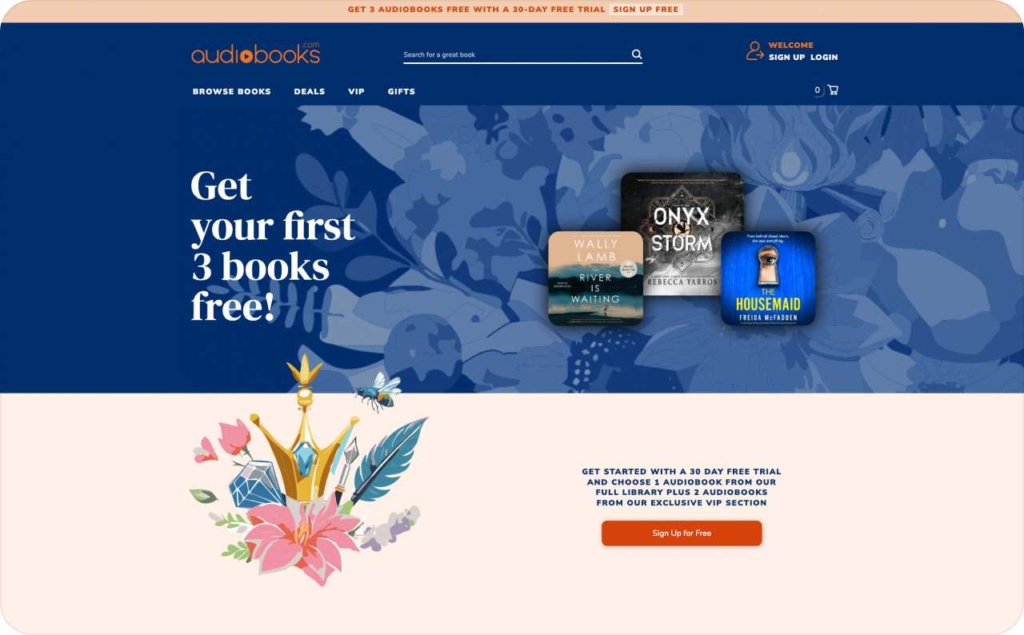
Photo source: Audiobooks
15. Box-set value anchor: Raise ROAS with bundles
Turn your series into a box-set bundle to boost profitability and attract deal-focused readers. By offering multiple books at a discounted price, you lift average order value and give your ads more breathing room — every click stretches further.
Examples that work:
- A bold “3-book box set” badge with a clear price callout on your ad image
- Carousel creatives showing each book cover with a “Save 60%” or “All-in-one read” caption
- Amazon ASIN targeting against other box sets in your subgenre
Why it works:
- A higher AOV raises your breakeven CPC, improving ad efficiency
- The value perception of a bundle increases CVR, especially on discount days
- You earn more revenue per click, lowering pressure on ACOS
- Perfect for deal-hunters and binge readers who prefer complete stories
How to use it in your advertising:
Create ad visuals that make the bundle unmistakable, include “3-book box set” and the price front and center. Target comp box sets via ASIN product targeting or interest segments. Keep your promo window short to drive urgency, and measure performance by ROAS uplift rather than clicks alone — bundles often outperform singles once scale and value align.
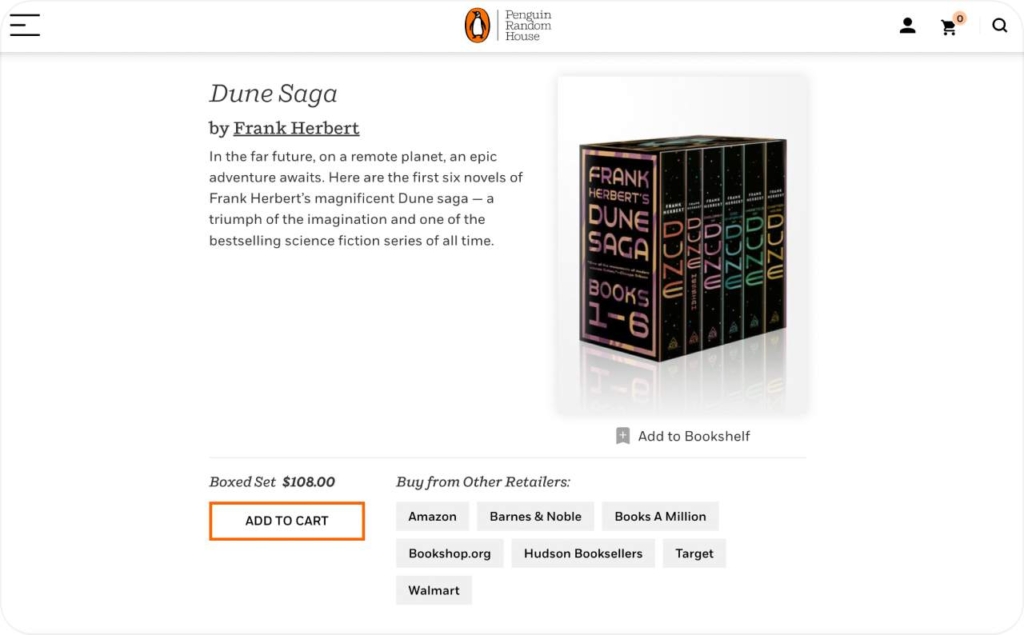
Photo source: Penguin Random House
How much should you spend on ads for authors
| Catalog size | Start daily budget | Best channel mix | Scale when ALL true | Scale rule | Creative cadence |
| 1–2 books | $5–$10 | FB/IG 60% · Amazon 40% | Link CTR ≥ 1.0%, LP CVR ≥ 6%, Launch ACOS ≤ 70% | +20% after 3 stable days | Refresh at 20–30% fatigue or weekly |
| 3–5 books | $10–$20 | Amazon 60% · FB/IG 30% · BookBub 10% | Amazon CTR ≥ 0.5%, CVR ≥ 7%, KU reads rising | +20–30% each week | Add 2 new creatives/week |
| 6–10 books | $20–$40 | Amazon 50% · FB/IG 30% · BookBub 20% | Steady ACOS ≤ 40–50%, stable CPC, consistent sales | Add Top-of-Search +10–30%; expand ASINs | Rotate winners biweekly; kill under-performers |
| 10+ books / box sets | $40–$80 | Amazon 50% · PMax 20% · FB/IG 20% · BB 10% | ROAS stable, fatigue < 30%, series read-through confirmed | Scale by title winners; raise caps selectively | Monthly creative pack |
Why do you need an AI ad generator to create ads for authors?
Just like with education ads, you need to go into detail to make a good author ads. Hiring designers, testing audiences, and tracking results quickly eats into time and money. An AI ads generator gives you professional-level campaigns without the agency price tag.
Zeely AI is a business growth app built for small teams, indie authors, and lean marketers who need their dollars to stretch further. It’s an AI ad tool for authors that creates and optimizes ads automatically, so every cent goes toward reach, not guesswork.
See creative solutions for other industries
Where Zeely saves both time and spend:
- No design budget? Zeely’s automated ad creation builds ready-to-launch visuals in 1:1 and 4:5 formats, no designer required
- Running on $5–$10/day? The tool is tuned for small-budget optimization, showing which ads earn real returns before you scale
- Unsure who to target? Built-in audience suggestions find the cheapest clicks for your genre and platform
- Losing money on mismatched ads? Brand-kit templates keep tone, color, and style consistent — less waste, stronger recall
- Testing blind? Smart A/B testing reveals which creative wins without manual setup
- Paying for data you can’t read? The performance dashboard breaks down CTR, CPC, CVR, and ACOS in plain language so you see what’s worth funding
- Promoting KU titles? Use KU-friendly templates that convert on micro-budgets
Zeely turns small ad spends into measurable growth. It helps indie authors stay competitive without overspending — every click, image, and line of copy optimized for return, not flash.
If you want to grow your readership on a realistic budget, try Zeely AI, the AI ad generator built to make every dollar count.
You may also like
Also recommended

